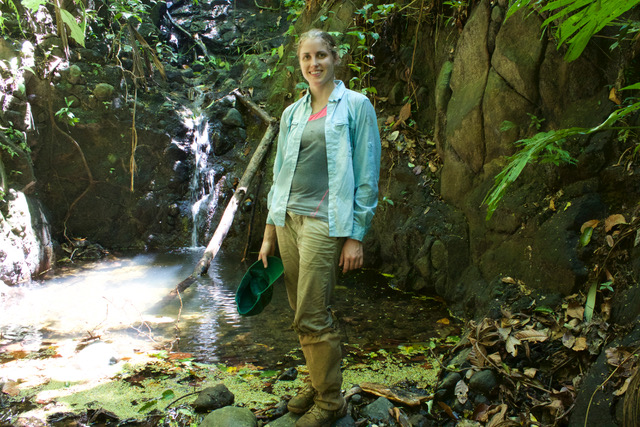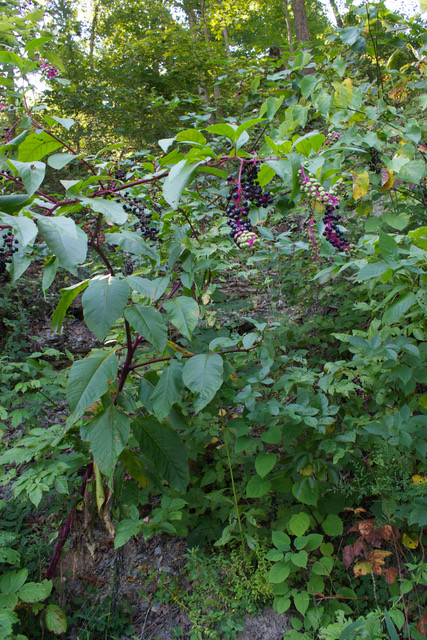
The activities are as follows:
- Teacher Guide
- Student activity, Graph Type A, Level 3
- Student activity, Graph Type B, Level 3
- Student activity, Graph Type C, Level 3
- Grading Rubric
Éste Data Nugget también está disponible en Español:
- Actividad para estudiantes, Tipo de gráfica A
- Actividad para estudiantes, Tipo de gráfica B
- Actividad para estudiantes, Tipo de gráfica C
Long before chemists learned how to make medicines in the laboratory, and even long before there were chemists, people found their medicines in plants. To this day, people still extract some medicinal drugs from plants, while others that we used to get from plants are now manufactured in factories.
Why do plants make these chemicals that are often so useful to people? One reason is that plants can’t run away or hide from herbivores, the animals that eat them. So instead, many plants defend themselves using chemicals that are poisonous or toxic to herbivores. As pharmacists say, “the dose makes the poison,” meaning it all comes down to quantity. A tiny amount of caffeine helps you stay awake, but you wouldn’t feel so great if you ate a giant salad of coffee leaves. Similarly, an herbivore that tries to eat coffee leaves would get sick, so it will avoid eating coffee leaves. That’s why plants have evolved to make chemicals – because the chemicals discourage animals from eating the plants. This benefit helps plants survive and reproduce, and any benefit to humans is an unintentional side effect of evolution.
Carina is fascinated by the amazing ways that plants have evolved to avoid being eaten. She also loves researching tropical forests near the Equator. Tropical forests have many more kinds of plants and insects than temperate places, which are farther from the Equator. One important difference between the climates is that the tropics don’t have harsh winters that kill insects. Therefore, biologists think that tropical plants get eaten more by herbivores.
Some plants have high chemical diversity, and make many kinds of chemicals. Biologists have observed that some plants with high chemical diversity are especially difficult for herbivores to eat. Carina thought that maybe stronger insect attacks in the tropics would lead the tropical plants to evolve higher chemical diversity than temperate plants in order to better protect them from herbivory. She thought that over time, the individual plants that had more types of chemicals in their leaves would grow and reproduce more. This would allow them to pass on their traits to the next generation.

To answer her question, Carina collected seeds from wild pokeweed plants in Michigan and Florida. She also collected seeds in Costa Rica from jaboncillo, a species closely related to pokeweed that lives in tropical countries in Latin America. She chose these locations because they vary in how close they are to the equator, and how severe their winters can be. Michigan has long and very cold winters (a temperate climate), Florida has mild winters with occasional freezing (a subtropical climate), and in Costa Rica temperatures never go below freezing (a tropical climate).
She started by growing 15-20 plants from each location in a greenhouse. Then, she extracted chemicals from their leaves and analyzed the chemical diversity of each plant. Chemical diversity is measured by an index that includes how many and how abundant different kinds of chemicals are. Carina predicted that the tropical plants would have the highest chemical diversity. She also predicted that the subtropical plants would have higher chemical diversity than the temperate plants.
Featured scientist: Carina Baskett, Michigan State University

Thank you for your question, Martina! That was definitely an oversight. Yes, the pokeweed studied in Michigan and Florida is Phytolacca americana. The tropical relative studied in Costa Rica is Phytolacca rivinoides. There is a lot of similar data in this paper (open access), but not exactly the plant chemistry data. My email address is in the paper, feel free to write with more questions!
~Carina
https://esajournals.onlinelibrary.wiley.com/doi/full/10.1002/ecm.1397
Dear Authors,
I am keenly interested in utilizing the provided data nugget. However, to enhance the scope of my activities, I kindly request the scientific names of the plants involved. Given the various plants referred to as “Jaboncillo” in the literature, I would appreciate clarification on which specific plant is represented in this nugget.
I presume that the wild pokeweed mentioned is Phytolacca americana, known to be present in Croatia and considered invasive.
Thank you for your assistance.
Best regards and greetings from Croatia!
Martina, biology teacher